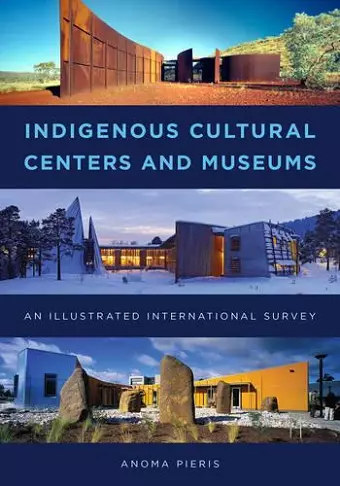Indigenous Cultural Centers and Museums
An Illustrated International Survey
Format:Hardback
Publisher:Rowman & Littlefield
Published:14th Jul '16
Currently unavailable, our supplier has not provided us a restock date

Here is a lavishly illustrated descriptive survey of 48 leading indigenous cultural centers around the world (35 are from Australia and 13 from North America, Japan, Europe, and Asia). The book shows how each is a potentially transformative, politically compelling addition to the field of cultural production, illustrating how the facilities --- all built in the last three decades --- have challenged assumptions about nature, culture, and built form. Using the spatial-temporal practice of place-making as the starting point, the facilities highlighted here are described in terms of collaborations between a number of stake-holders and professional consultants. The book adopts the format of a descriptive survey with separate chapters devoted to individual case studies. A broad introductory chapter which presents the arguments and overview precedes richly illustrated short individual essays on selected projects. Each chapter commences with the details of the project including, location, area, cost and consultants, followed by a project description, and discussion of background, design development and reception of the projects. Each project is approached as an architectural commission, detailing the critical criteria, consultants, and processes. The format is adopted from architectural review essays typically used in awards or journal publications within the profession which are accessible and relevant for both academics and practitioners. Considerable attention is given to the process, and to the evaluation of the project as a cultural response. Each case study has been written with consultation of architects or administrators of the facilities for accuracy. Indigenous Cultural Centers and Museums: An Illustrated International Survey documents a rich legacy of collaboration across the spatial disciplines combining creative art practice, architecture, construction, landscape design and urban design in the production of unique and culturally significant social institutions. This book provides material on hitherto unknown bodies of work of talented architectural practices, working collaboratively with culturally different client groups and developing consultative processes that test models for inter-cultural engagement.
[T]he book has value, and not just as travel guide (though it could serve as that). Looking at architecture in particular, Pieris examines the origins, development, and public reception of the sites, many of them designed in consultation with Indigenous peoples. One strength of the book is the author's overview of how architects and curators (mostly Australian) considered the voices of Indigenous people in their design and interpretive practices. Of special note is the Brambuk, a cultural center in Victoria, Australia: the center's circular forms represent the five Aboriginal communities that make up Brambuk Incorporated (which owns the Brambuk facility). Architects took care to invoke ancient stone dwellings throughout the complex, which drapes across the foothills of the Grampian mountains. At other centers discussed, designers incorporated buildings into existing landscape features (and included indigenous plants). Summing Up: Recommended. Graduate students, researchers, faculty; professionals; general readers. * CHOICE *
Professor Anoma Pieris describes the new challenges faced by cultural centers and museums. She writes in a clear and engaging manner that suggests she is fully engaged with the subject matter, and the result is a real contribution to Indigenous studies. -- Joy Monice Malnar, co-author with Frank Vodvarka of New Architecture on Indigenous Lands
ISBN: 9781442264069
Dimensions: 260mm x 184mm x 24mm
Weight: 907g
328 pages